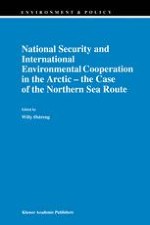The basic objective of this report is to place the debate about the future of the Northern Sea Route into the larger picture of Arctic politics and the emerging agenda of the Arctic as a developing region in international society. National security and international environmental cooperation, are the objects of study employed, both separately and in various conceptual combinations, to realize this purpose. To help me in this, I was privileged to draw on the profound expertise of my highly esteemed co-authors, Professor Franklyn Griffiths at the University of Toronto and Senior Researchers at IMEMO in Moscow: Raphael Vartanov, Alexei Roginko and Alexander Kolossov. To their cooperative spirit, friendship and solid contributions to this report, ( am deeply indebted. The report is the result of multiple contributions, both in terms of substance and funding, extending far beyond the inputs of the team of authors. The professional input and thorough work 'behind the scene' done by Liv Astrid Sverdrup, Researcher at FNI at an early stage of the project, has been invaluable. Senior Consultant Kjell Moe at the Norwegian Polar Institute also provided valuable comments and improvements to the biological parts of the Introductory chapter, whilst Senior Consultant Ann Skarstad at FNI, worked wonders with the language for those of us not having English as our mother tongue. Claes Lykke Ragner, Deputy head of the (NSROP secretariat, and Dr.
